
Editor's Note: This story originally appeared on LawnStarter.
Enjoying a beautiful lawn is one of the most rewarding aspects of being a homeowner, but your turf takes maintenance. Knowing the best time to mow your lawn will take your turf from good to great.
When Is the Best Time to Mow My Lawn?
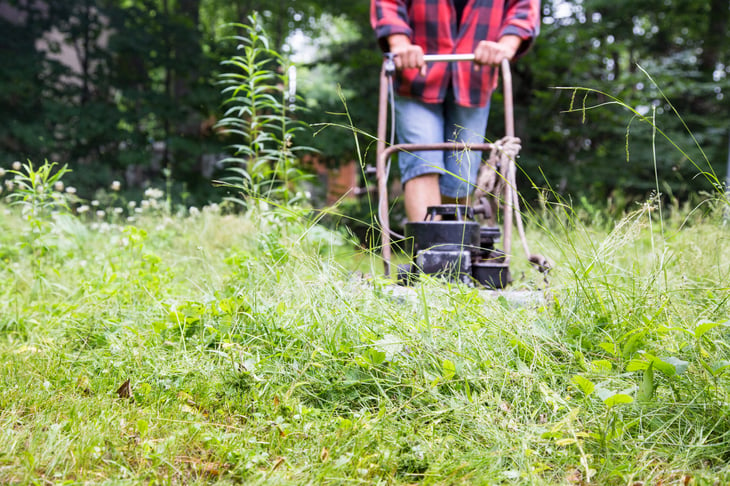
The best time of day to cut grass is midmorning, between 8 a.m. and 10 a.m. Here’s why it’s the ideal time:
- Moisture: The morning dew has typically dried by this time. Cutting wet grass is one of the worst things you can do for your lawn. The blades will tear, and the clippings will clog your mower, so mowing after the dew dries is the way to go.
- Heat: Grass will need time to recover before heat stress starts. By mowing midmorning, your turf will have several hours to heal before the scorching afternoon sun hits.
- Recovery: Your lawn needs time to heal before the sun goes down. With the night comes moisture and an increased risk of disease and fungal infections.
If you’re not a morning person, don’t worry. The second best time to mow your lawn is late afternoon or early evening, from 4 p.m. to 6 p.m., and here is why:
- Moisture: The moisture is low during this time of day, so the risk of blade tearing and mower clogging is low.
- Heat: The worst of the middle of the day sun has passed, so the heat of the day won’t stress your lawn too much.
- Recovery: Your lawn will still have enough time to heal before nightfall comes, reducing the risk of disease and fungal infections.
When Is the Worst Time to Mow My Lawn?
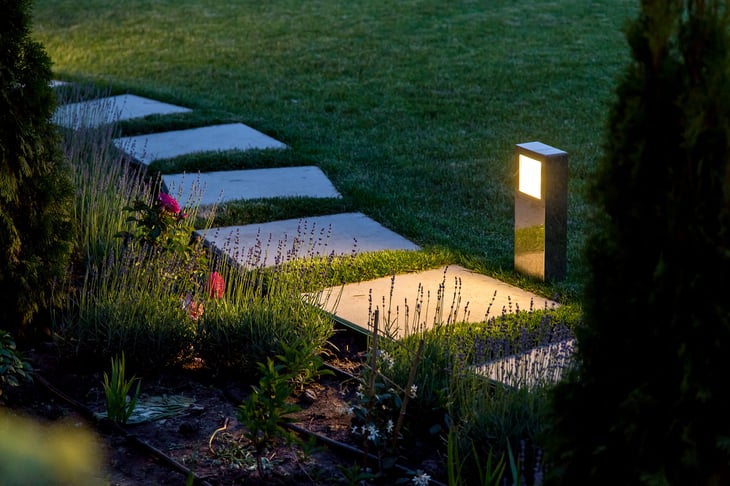
The worst time of day to mow your lawn is early morning, between 6 a.m. and 8 a.m. Here are the reasons:
- Moisture: In the early morning, dew still covers your turf. As mentioned before, cutting wet grass is one of the worst things you can do for your turf. The blades of grass will rip, the soil will compact, and your lawn will have ruts.
The second worst time of day to mow your lawn is in the evening, after 6 p.m.
- Recovery: Grass needs time to heal and recover before nightfall. The moisture that forms overnight and the cooler temperatures make your lawn susceptible to disease and fungus.
How Often Should I Mow (by Season)?

The mowing frequency will vary depending on your type of grass and climate. Mow at the ideal height for your cool-season or warm-season grass type. A consistent grass height is more important than a consistent mowing schedule. Here are the general guidelines on how often to mow your lawn by season.
Spring
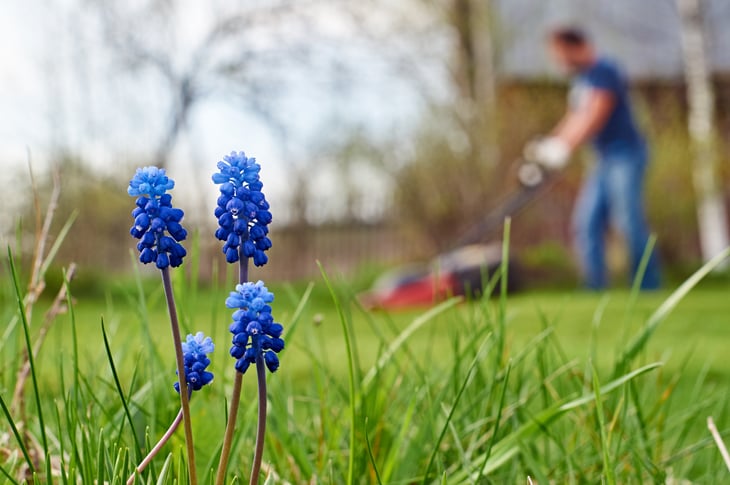
On average, mow your lawn once a week in the spring. Your first mow will generally happen in March, then increase frequency to keep up with spring growth.
Summer

Lawn mowing in the summer months will fluctuate depending on the rainfall in your area. Most areas will need weekly to twice per week cuttings. The amount of rain your grass receives will dictate lawn mowing frequency.
If your lawn isn’t receiving enough water, the grass will go dormant and appear dead. Do not cut the grass when it is dormant as that will cause damage. Usually, regular irrigation will bring dormant grass back to life.
Fall
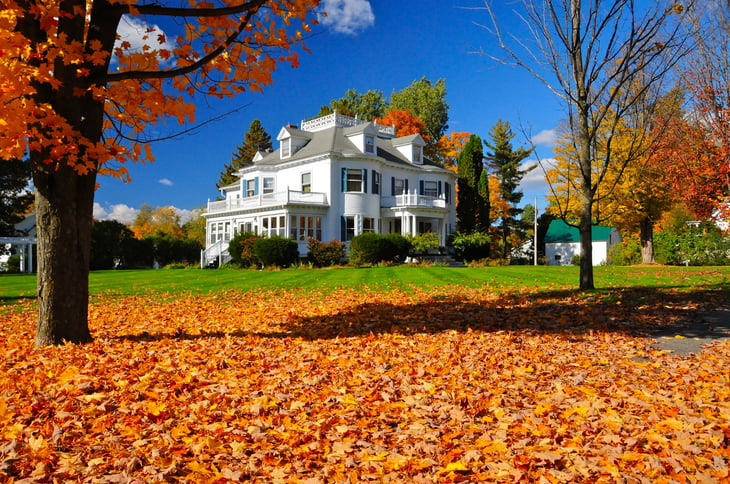
As the temperature falls, your grass will grow slower. On average, mow your lawn weekly in the fall. However, as winter approaches, increase your grass length in preparation for frigid conditions.
Winter
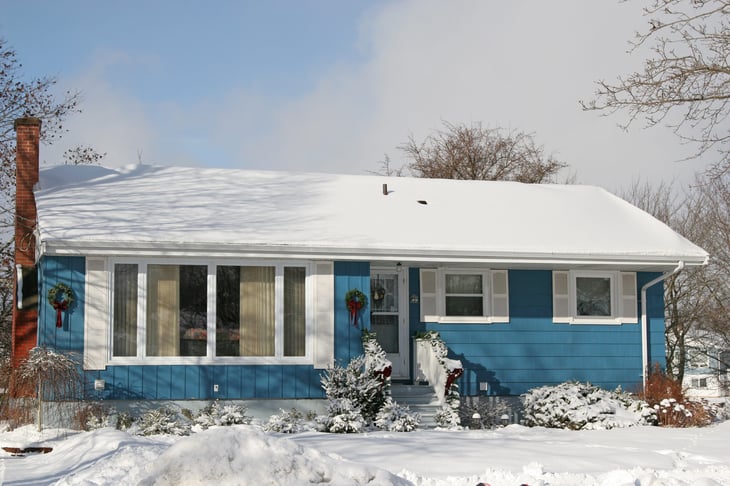
In most areas, lawn care and lawn mowing are unnecessary in the winter. In the warmest climates, the occasional clipping is needed, but only using a high-cut setting. Never mow if the turf is frozen or moist, as it will hurt your lawn.
Lawn Mowing Tips and Tricks

The following are some tips and tricks to keep your lawn looking great.
Keep Your Mower Blade Sharp
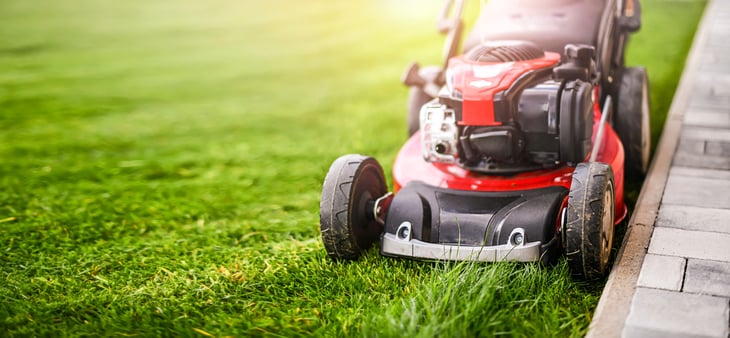
With a sharp blade, your mower can make a clean slice. With dull blades, you risk tearing the grass. Keeping your mower blades sharp is especially important if you have a mulching mower due to the extra cutting.
Vary Your Mowing Pattern
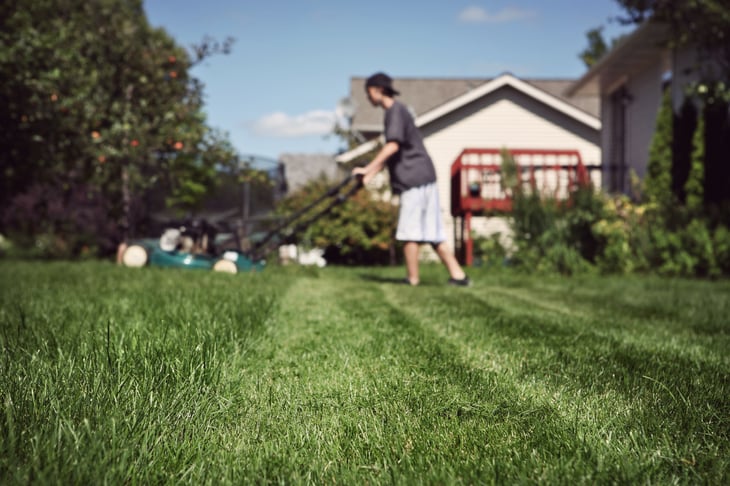
Mowing in the same direction every time can cause the grass to lean in the direction you mow, which can cause ruts. Varying your mowing pattern leads to turf that stands up tall.
Leave Grass Clippings on Your Lawn
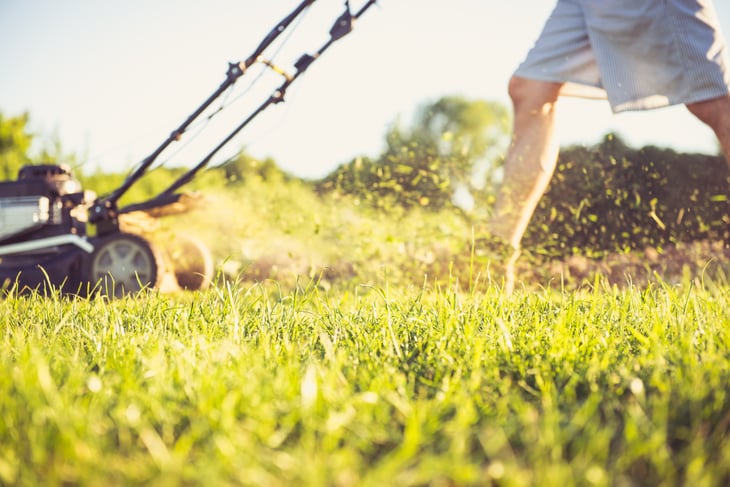
This may seem strange, but when you let clippings stay, they break down and fertilize your lawn. The process is called mulching your lawn clippings or grasscycling. Just be sure to trim at regular intervals. Long grass clippings will not easily break down and can smother your turf instead of feeding it. A healthy lawn increases photosynthesis, making your lawn lush.
When Using a Push Mower, Mow Forward
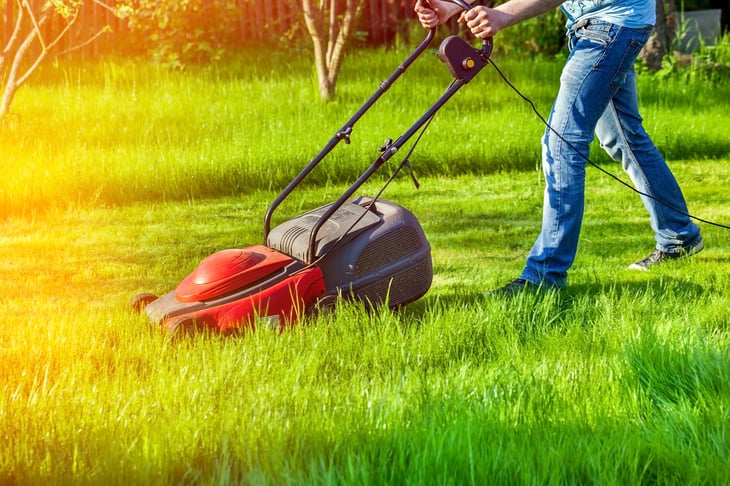
Mowing in reverse presents performance and safety concerns. Backward mowing causes a choppy lawn and incorrectly discharged grass clippings. It also limits your visibility, leading to falls, injury, or bumping over a pet or child.
Protect Yourself

When handling lawn care, wear closed-toed shoes, sunscreen, and eye protection like sunglasses. Even on cloudy days, sun rays will filter through, causing sunburn.
FAQ About the Best Time to Mow My Lawn

Keep reading to find answers to common questions about lawn care.
When Should I Not Mow My Grass?
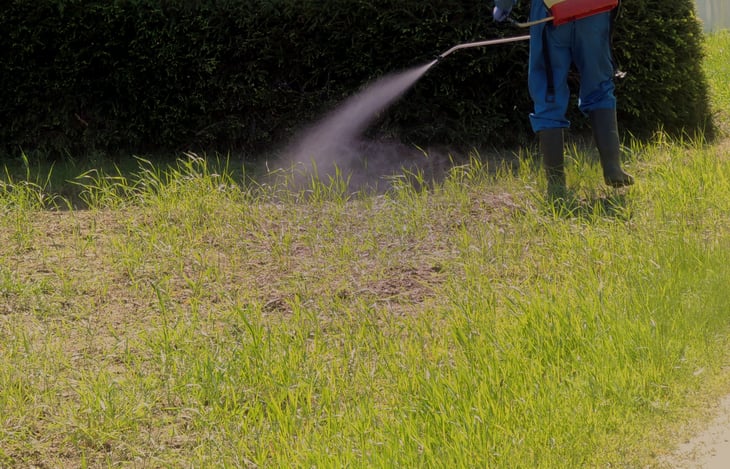
There are some no-no’s when it comes to DIY lawn mowing.
- Never mow when the grass is wet. Hard stop. Do not pass go. Just say no.
- Don’t mow when there is a drought. In times of high heat and low water, grass will go dormant. Cutting dormant grass will cause damage.
- Don’t cut grass soon after fertilization. It takes time for grass to absorb the nutrients applied during fertilization. Cutting your lawn will disrupt this process.
- Never mow your lawn if it has a disease. Mowing flings the diseased clippings around your healthy lawn, creating more sickness. Like coughing without covering your mouth, lawn mowing diseased grass is a bad idea.
What Is the Correct Way to Mow Your Lawn?
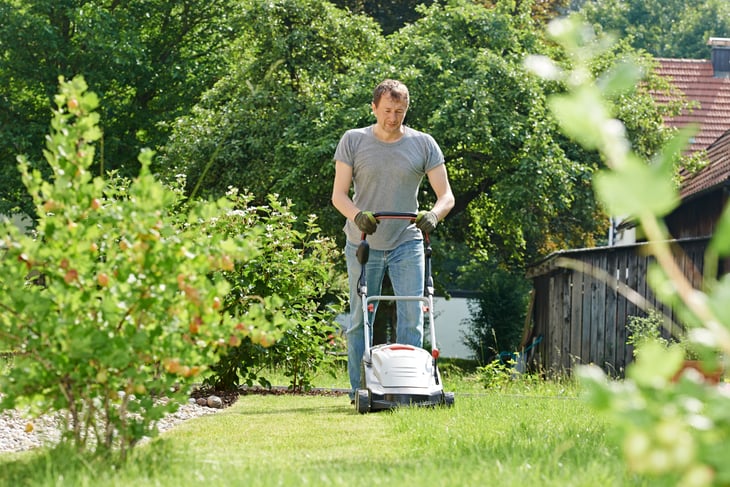
There are three best practices for lawn maintenance:
- Cut grass at the correct height. Lawn mowing too short is the most common mistake and will turn your lawn brown.
- Cut grass regularly. With regular mowing, you can fertilize with your lawn clippings, encouraging thicker growth and a healthy lawn.
- Keep your lawn mower blades sharp. This creates a nice clean slice and prevents rips and tears, giving your lawn a beautiful, crisp look.
When Is the Best Time to Water My Lawn?
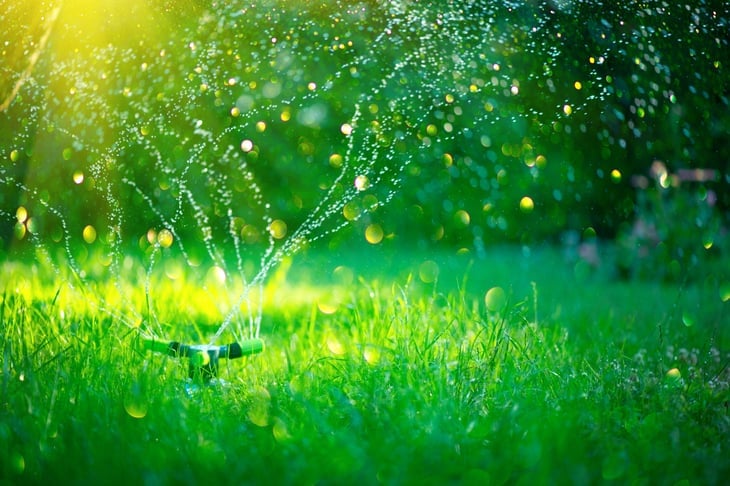
Early in the morning between 4 a.m. and 8 a.m. Winds tend to be calm this time of day, and because the sun is just beginning to rise, the grass won’t have to compete with evaporation. Here are a few lawn watering tips to keep in mind:
- Water your lawn deeply, especially in times of low rainfall.
- Watering pattern and frequency will vary depending on your soil type.
- Different grass types have different watering needs.
What Causes Bare Spots on the Lawn?
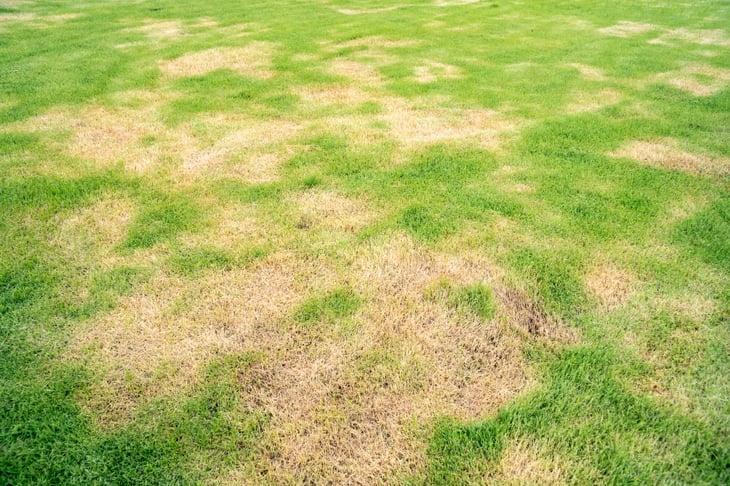
There are a few things that can cause bare spots on your lawn. These are the most common causes:
- Mowing the grass too short
- High foot traffic
- Poor soil conditions
- Animal urine
- Grub infestation
- Fungal infections
- Disease






Add a Comment
Our Policy: We welcome relevant and respectful comments in order to foster healthy and informative discussions. All other comments may be removed. Comments with links are automatically held for moderation.